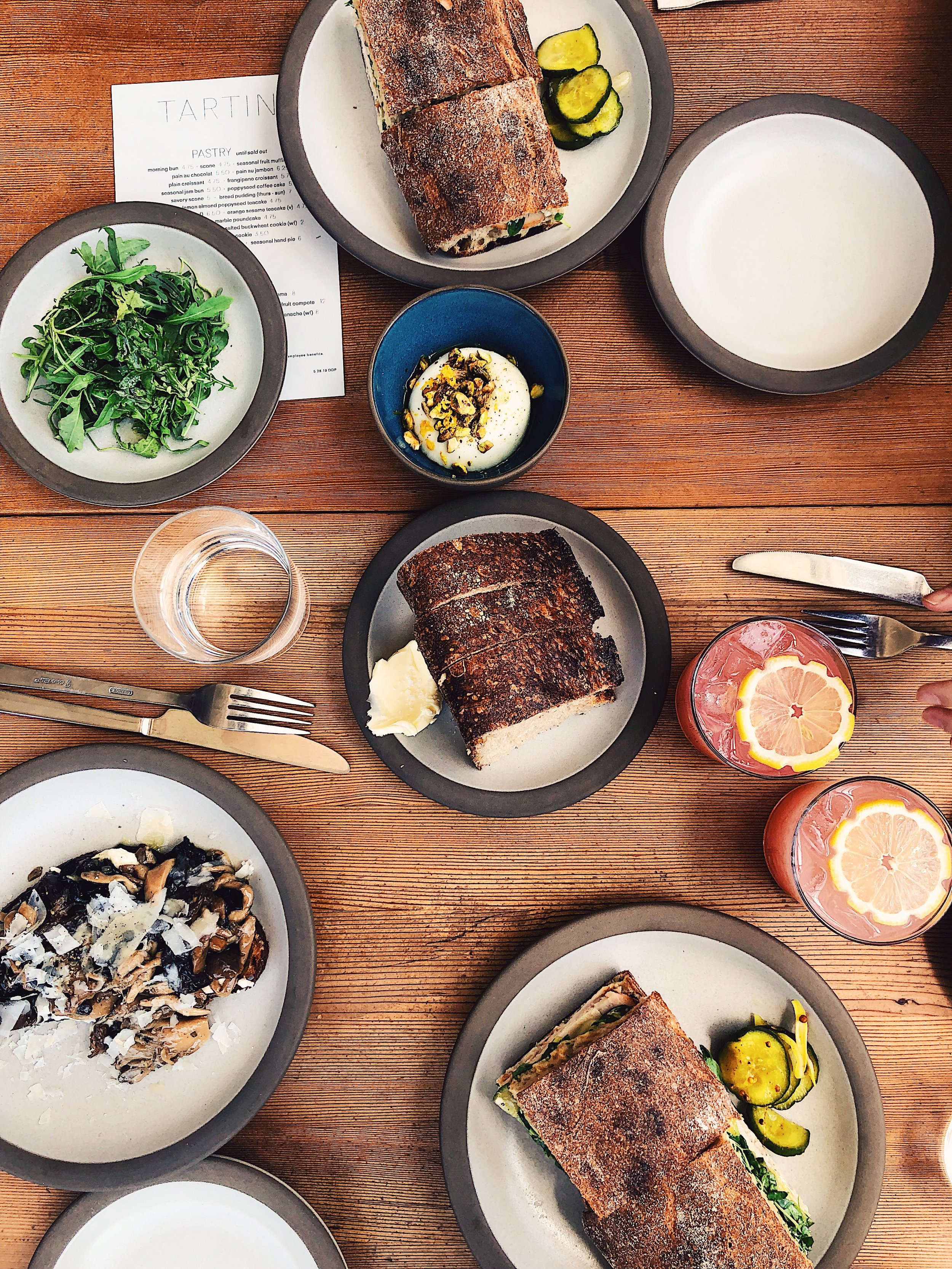Eating mindfully is a challenge for all of us, especially in a current society of distractions. Following my 8 steps to eat more mindfully may be easier to start practicing at home when you can intentionally clear a space from distractions. But what about when you eat out at a restaurant? There are so many distractions - figuring out what to order, catching up with friends, coworkers, clients or a new love interest. Who has time to eat mindfully when you are trying to figure out if the person across from you is your soulmate?!
Oof, so many things!! A quick reminder that eating mindfully isn’t about perfection. It is a practice, and the more you do it, the proficient you get. It is about letting go of perfection and instead being in the present moment.
It should also be noted that eating out at restaurants can be anxiety inducing for many. Slowing down and trying a few of my mindful eating tips below will be helpful not only to reduce any anxious food thoughts, but also to help digest better and avoid any stomach upset, heartburn and bloat.
CHECK IN WITH HUNGER BEFORE YOU GET THERE: how many times have you showed up to a restaurant and between the time you sit down and when your food comes the hanger kicks in? This happens to me all the time and it is distracting. Arriving at a restaurant starving keeps you from checking in with what you really would like to eat. When you are hangry you are ready to order the entire left side of the menu, am I right? Check in with your hungry 30 minutes to an hour before leaving. Have a small snack if needed. Being a just hungry enough when you show up to the restaurant will give you the space to explore the menu and think about what you truly want rather than reacting to a blood sugar crash.
PLAN AHEAD: reading the menu of the restaurant you plan to go to before your meal can be helpful if you have a tendency to get anxious when ordering at restaurants. If you are one of those people who waits until everyone else orders, to see what they get before making your decision… then this might work well for you. I do caution that sometimes looking at the menu too far in advance can stand in the way of checking in with your hunger when you are there. Give yourself grace to change your mind if you sit down and something else sounds good to you in the moment. Take a quick scan of the menu before jumping back in to being present with those at the table with you.
PAUSE BEFORE THE FIRST BITE. This can be challenging to do if the waiter or waitress puts your plate down when you are engaged mid-conversation. I suggest looking down at your food when it comes and making an exclamation to your current convo buddy about how good the food looks! This will incite them to do the same, and in these few seconds of pause you can check in with your hunger. You will have already taken a moment to take in the smell and colors of the meal, and now take another moment to savor the first bite - the texture, taste and mouthfeel. Taking small moments to savor the meal, even better if in a shared moment with others, helps to turn on your hunger cues as well as fullness cues.
EAT DESSERT IF YOU WOULD LIKE. Desserts can be scary for those who have patterns of restriction and food rules. A reminder that sugar is not the devil and that all foods fit and have a place in our lives. If you are interested in a dessert, it is also ok to eat past the point of being full. This is a practice of leaning in to the different types of hunger. Denying yourself something that you would like and would enjoy in the company with others is actually disconnecting your brain from your body, instead of mindfully tuning in to what you want. This also goes the other way, if you don’t want dessert, don’t feel pressured by others at the table who want to order.
GO SLOW. Sometimes it is easy to get caught up in the moment, whether in the company of others, or in the conversation at the table, and before you know it you have wolfed down your meal and don’t even remember how it tasted. We often feel like we need to keep on pace with others at the table as well, which can result in eating faster than normal. It can feel weird to be the last one at the table who is still finishing your meal. All plates have been cleared and you are still munching. But your digestion will thank you! As you engage in conversation, it is possible to multi-task and be present with the bites you are taking. Slowly eating and chewing while being present with those at the table. It takes practice, but it is possible!










